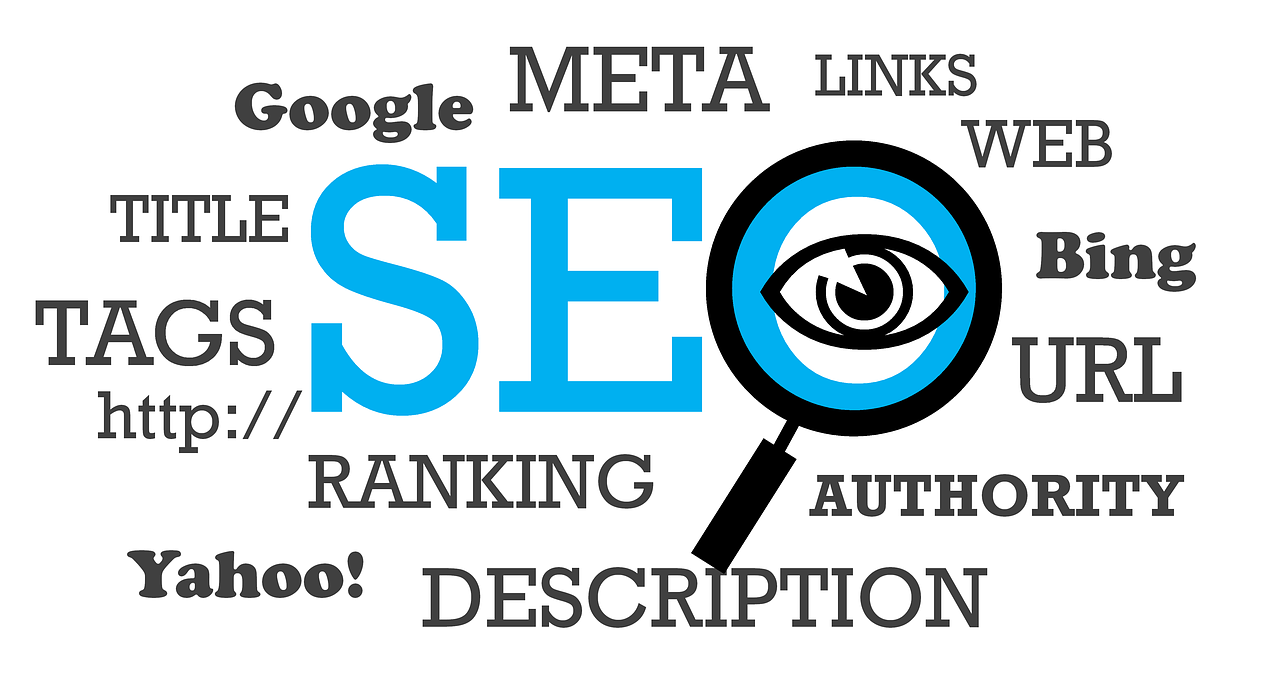How To Write SEO-Friendly Content That Converts [2024 Guide]
How to Write SEO-Friendly Content That Converts [2024 Guide]
Crafting SEO-friendly content that converts isn’t just about adding in keywords; it’s about striking the perfect balance between search engine optimization and creating valuable, engaging content for your readers. In today’s digital age, it’s imperative to make your content visible to search engines while also capturing the interest of your audience. Through this guide, you’ll learn actionable tips and strategies to help you produce content that ranks high on search engines and drives meaningful conversions. Get ready to transform your content into a potent tool that attracts and retains your target audience effectively.
Understanding SEO-Friendly Content
In our online playground, crafting SEO-friendly content plays a pivotal role in enhancing online visibility and driving conversions. Understanding the key elements of SEO-friendly content is essential to create a compelling narrative that pleases both search engines and human readers.
Key Elements of SEO-Friendly Content
When it comes to optimizing content for search engines, several critical components come into play.
- Keyword Research: Conducting thorough keyword research is the foundation of SEO-friendly content. By identifying relevant keywords and strategically integrating them into your content, you can improve your chances of ranking higher in search engine results. For instance, tools like Google Keyword Planner and SEMrush can assist in finding the most effective keywords.
- Quality Writing: Creating high-quality, engaging content is key to capturing the interest of your audience. Ensure your content is well-written, informative, and adds value to the reader’s experience. Remember, content that answers questions or solves problems will always perform better. Put your readers first.
- Proper Headings: Utilizing proper heading tags (H1, H2, H3, etc.) not only enhances the readability of your content but also provides search engines with valuable information about the structure of your page. Clear headings make the content skimmable, which is a plus for both readers and search engines.
- Meta Descriptions: Crafting compelling meta descriptions that accurately summarize the content of your page can entice users to click through to your website from search engine results pages. Although not a direct ranking factor, a well-written meta description can significantly impact your click-through rate (CTR).
- Internal Linking: Incorporating internal links within your content helps establish a logical flow of information on your website. It also improves navigation for users and allows search engines to crawl and index your site more effectively. Internal links are the threads that weave your content together.
Engagement and Conversion Factors
Creating SEO-friendly content is not just about optimizing for search engines; it’s also about engaging your audience and driving conversions.
- Engaging Content: Engaging content that helps your target audience is more likely to be shared, liked, and commented on. By focusing on creating valuable and relevant content, you can build a loyal readership. Interactive elements like quizzes, videos, and infographics can significantly enhance engagement.
- Calls-to-Action (CTAs): Including clear, compelling CTAs prompts users to take the desired action, whether it’s making a purchase, signing up for a newsletter, or downloading a resource. Phrasing your CTAs assertively and ensuring they stand out on the page can make a huge difference. Try not to be repetitive with your CTAs, mix it up a bit.
- User Experience: A seamless user experience is crucial for retaining visitors on your site. Ensure your content is easy to navigate, mobile-friendly, and offers a pleasant browsing experience. Fast loading times and intuitive design play major roles here. For more details, you can check out Google’s Page Experience guidelines.
- Impact on Conversion Rates: SEO-friendly content that effectively engages users and guides them through the conversion funnel can ultimately lead to higher conversion rates and improved business outcomes. Think of your content as a map guiding your visitors to the final destination – a conversion.
By understanding the core elements of SEO-friendly content and focusing on engagement and conversion factors, you can create content that not only ranks well in search engines but also drives meaningful results for your business.

Photo by Kampus Production
Writing Content for SEO and Conversion
Crafting content that appeals to both search engines and human readers is essential for driving website traffic and increasing conversions. Understanding the fundamentals of writing SEO-friendly content that converts can significantly impact your online presence and engagement levels.
Keyword Research and Integration
Keyword research serves as the foundation of SEO content creation. By identifying relevant keywords that align with your content and target audience’s search intent, you can enhance your visibility in search engine results. Tools like Google Keyword Planner and SEMrush can aid in discovering high-impact keywords to integrate seamlessly into your content.
Steps for Effective Keyword Research:
- Identify Target Keywords: Start by brainstorming keywords related to your topic. Think about what your audience might be searching for. Do some research around your topic.
- Use Keyword Research Tools: Use tools like SEMrush, Ahrefs, and Google Keyword Planner to find keywords with high search volume and low competition.
- Analyze Competitor Keywords: Look at what keywords your competitors are targeting. This can give you ideas for keywords you might have missed.
- Select Long-Tail Keywords: These are more specific and often have less competition, making it easier to rank higher in search results.
Once you’ve identified your keywords, incorporate them naturally into your titles, headings, and throughout your content. Avoid keyword stuffing, as this can harm your readability and SEO performance.
Optimizing Titles and Meta Descriptions
Crafting compelling titles and meta descriptions is crucial for attracting clicks from search engine results pages (SERPs). A well-crafted title should be descriptive, engaging, and contain relevant keywords to entice users to click through to your website. Similarly, meta descriptions should accurately summarize the content while encouraging users to explore further.
Tips for Optimizing Titles and Meta Descriptions:
- Use Action Words: Words like “Learn,” “Discover,” and “Explore” can make your title more enticing.
- Keep It Concise: Titles should be under 60 characters and meta descriptions under 160 characters to ensure they aren’t cut off in SERPs.
- Include Keywords: Place your primary keyword close to the beginning of your title and meta description.
- Make It Compelling: Your meta description should act as a mini-advertisement for your content, giving an accurate and compelling summary. The more inviting the better.
Creating Engaging and Valuable Content
Creating engaging and valuable content is key to keeping readers on your page and encouraging them to take action. The more valuable your content, the more likely your audience will trust you and convert to customers. Trust is the key to sales.
Ways to Create Valuable Content:
- Solve Problems: Address common issues or questions your audience may have. This makes your content more relevant and useful.
- Use a Conversational Tone: Write as if you’re speaking directly to your reader. This makes your content more relatable and engaging.
- Incorporate Visuals: Use images, infographics, and videos to make your content more engaging and easier to digest.
- Provide Examples and Case Studies: Real-life examples and case studies can help illustrate your points and provide proof of your claims.

Photo by Charlotte May
Incorporating Call-to-Actions (CTAs)
Strategically placing CTAs within your content prompts readers to take specific actions, such as signing up for a newsletter, making a purchase, or engaging with your brand. Clear, compelling CTAs guide users through the conversion funnel, increasing the likelihood of desired outcomes. Ensure CTAs stand out and align with user expectations for optimal results.
Effective CTA Strategies:
- Be Clear and Concise: Your CTA should clearly state what action you want the reader to take.
- Use Strong Action Verbs: Words like “Buy,” “Subscribe,” and “Download” can encourage immediate action.
- Make It Stand Out: Use contrasting colors or larger fonts to make your CTA stand out from the rest of your content.
- Place Strategically: Position your CTAs where they are most likely to be seen, such as at the end of a blog post or in a pop-up.
By integrating these strategies into your content creation process, you can write SEO-friendly content that not only attracts visitors but also converts them into customers.
Wealthy Affiliate
Learn why we say, “We Can Teach Anyone To Build A Successful Online Business!”
Try For Free, No Credit Card Required
Optimizing Content for Conversion
To maximize the effectiveness of your content in driving conversions, it’s crucial to look into user behavior analysis and refine your strategies through A/B testing and Conversion Rate Optimization (CRO).
Analyzing User Behavior and Refining Content
Understanding how users interact with your content is key to optimizing it for better engagement and conversions. By utilizing analytics tools like Google Analytics and heatmaps, you can gather valuable insights into user behavior, such as what content they engage with the most, where they drop off, and what prompts them to take action.
Here’s how analyzing user behavior can help:
- Identify Popular Content: Discover which articles or pages attract the most readers.
- Understand User Paths: Track the journey users take through your site to see where they drop off.
- Gauge Engagement: See which parts of your content hold attention and where people bounce.
- Monitor Conversion Actions: Know what steps lead to goal completions, like downloads or purchases.
With these insights, you can tweak your content to better meet user expectations. Tailoring your messaging and structure based on real data ensures a more personalized experience that is useful for your audience. Think of it as tuning an instrument; each adjustment brings you closer to a harmonious result.
A/B Testing and Conversion Rate Optimization (CRO)
A/B testing involves comparing two versions of a webpage or content piece to determine which performs better in terms of engagement and conversions. You might test variations of headlines, calls-to-action, or even the layout of your page.
Here’s a simple approach to A/B testing:
- Identify the Element to Test: Decide whether you’ll test headlines, CTAs, images, or other elements like colors.
- Create Variations: Develop two versions (A and B) with only one differing element.
- Run the Test: Use tools like Google Optimize to show different versions to different segments of your audience.
- Analyze Results: Based on user interactions, determine which version performs better.

Photo by Sam Lion
CRO takes this a step further by continuously optimizing your content based on data and insights gathered from A/B testing. The goal is simple: improve conversion rates over time.
Implementing CRO techniques can involve:
- Streamlining the Checkout Process: Make it easy for users to complete purchases.
- Optimizing Forms: Simplify forms to reduce abandonment.
- Improving Site Speed: Ensure your site loads quickly to enhance user experience.
By integrating these techniques, you continuously refine your content to perform better. It’s like molding clay; each iteration brings you closer to the perfect shape. This process significantly impacts your conversion metrics and overall business success, establishing a cycle of perpetual improvement. If you find something that works, stick with it.
Conclusion
Crafting SEO-friendly content that converts requires a harmonious blend of search engine optimization and user engagement. By focusing on key elements such as keyword research, quality writing, proper headings, meta descriptions, internal linking, engaging content, and strategic CTAs, you can create content that is agreeable with both search engines and human readers.
Understanding the impact of user behavior analysis, A/B testing, and Conversion Rate Optimization (CRO) allows for continuous improvement and optimization of your content to drive better engagement and conversions. Embrace these strategies to enhance your SEO rankings and increase conversion rates effectively.
By implementing these actionable tips and strategies discussed throughout the article, you can elevate your content creation skills, attract a wider audience, and drive meaningful results for your online presence and business success.

Photo by George Milton








